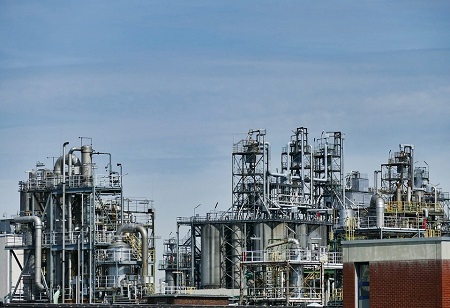Process heating accounts for a significant portion of industrial energy use, making it an area of significant opportunity for energy savings. However, it can also be one of the most complex and challenging areas of industrial plants to optimize. The
industrial heating equipment market is expected to become worth $64,134.8 million by 2030, registering a CAGR of close to 6 per cent till 2030.1 Electrical resistive heaters are nearly 100% efficient in converting power to heat, but as the majority of today's electricity comes from fossil fuels, they nevertheless indirectly release greenhouse gases.
Electric heaters have significant operating expenses and a large power demand from grid infrastructure, making it economically unviable to use them to electrify heat delivery. There are several factors that can impact the efficiency of process heating, from the type of fuel used to the design of the system. Process heating is the use of heat energy to increase the temperature of a material, liquid or gas. This type of heating is used in many industries and can provide an enormous amount of energy over time. However, there are several challenges that come with process heating that must be addressed before it can be effectively used. Process heating is a critical part of many industrial operations, but it can also be one of the most challenging areas to optimize. Here are five of the biggest challenges, and how they can be addressed.
Energy Efficiency
One of the primary concerns with process heating is how much energy it consumes over time. To help address this challenge, companies should invest in more efficient systems such as those equipped with low-emission burners or insulation for equipment to reduce heat loss during operation. Additionally, implementation of regular maintenance schedules helps ensure optimal performance from existing equipment and prevents excess usage from faulty systems or improper settings on controls.
Johnson Controls, a smart building solution provider, recently announced the acquisition of Hybrid Energy AS which provides high-
temperature energy management solutions focusing on heat pumps for district heating and industrial processes. “It is an exciting time in our industry as we come together to bring the next generation of safe, sustainable energy management technologies to market,” said Claude Allain, President, Johnson Controls HVAC/R and data centers.
Costs
Process heating can become expensive because not only does a company need to purchase new units when needed but additional costs include installation fees and ongoing maintenance costs throughout its lifespan. To reduce these expenditures many organizations have implemented cost monitoring solutions which allow them among other things to track electricity consumption for different processes or devices providing insight into where savings could be made by reducing usage times as well as identifying under-performing systems which may require replacement sooner than expected due to poor efficiency levels.
Safety
With any form of heat exchange involving high temperatures comes risk. Therefore, safety measures must always come first when dealing with this type of system regardless of location being indoors or outdoors. If combustible materials are present nearby, due diligence must always be taken when assessing potential risks associated before turning on any such unit (even if it has been checked beforehand). By implementing necessary precautions like using appropriate personal protective clothing and following operating procedures, some common issues like electrical fires and explosions will remain minimized ensuring everyone's safety around these machines at all times remains paramount priority for all personnel working near them whether their role directly involves their operations.
Maintenance Requirements
The longevity and effectiveness of process-heating depends heavily upon good maintenance practices. This includes checking pressure gauges regularly, and making sure proper filters are installed, replacing worn out components in timely manner such as hoses valves seals fans motors blades etc replacing lubricant oil grease coolants fluids as per manufacturer’s instructions, and conducting routine inspections both internally externally (in case external combustion engines involved). Conducting tests ensure proper ignition performance in order to minimize emissions and fuel consumption and improve overall machine health optimization.
The Way Ahead
Process heating has numerous benefits but it also brings unique challenges that must be addressed carefully through energy efficiency initiatives, cost management efforts, enhanced safety protocols and rigorous maintenance requirements - all providing peace of mind to businesses owners and operators alike, regardless of the situation facility resides within, allowing them to focus on what matters most for maximizing outcomes while ensuring highest standards operations in every step of the way ahead.
 Magazine
Magazine
